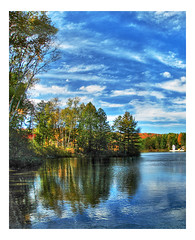
![]() Photo credit: Яick Harris
Photo credit: Яick Harris
According to the study Canada performed poorly and received D grades in the areas of waste generation, water usage, and greenhouse gas emissions. But the study still gave Canada an overall C grade because the country performed "better than average on other measures of environmental performance". The study notes that "Canada is not taking the necessary steps toward environmental sustainability", and that Canada "stands almost at the bottom of the pack" alongside with USA and Australia.
"We are among the world leaders in managing our forests, our air quality is good overall, and we have made progress on using energy efficiently," said Len Coad, Director, Environmental Energy and Transportation Policy. "But we generate far too much waste, we still use water as though we have an unlimited supply, and our past record on greenhouse gas emissions (GHG) is terrible."
The European countries Sweden, Finland, Norway and Switzerland earned A grades and was ranked as the best performers in almost all categories, while only "lagging" in "certain measures related to biodiversity and energy intensity".

Recommended Comments
Join the conversation
You can post now and register later. If you have an account, sign in now to post with your account.